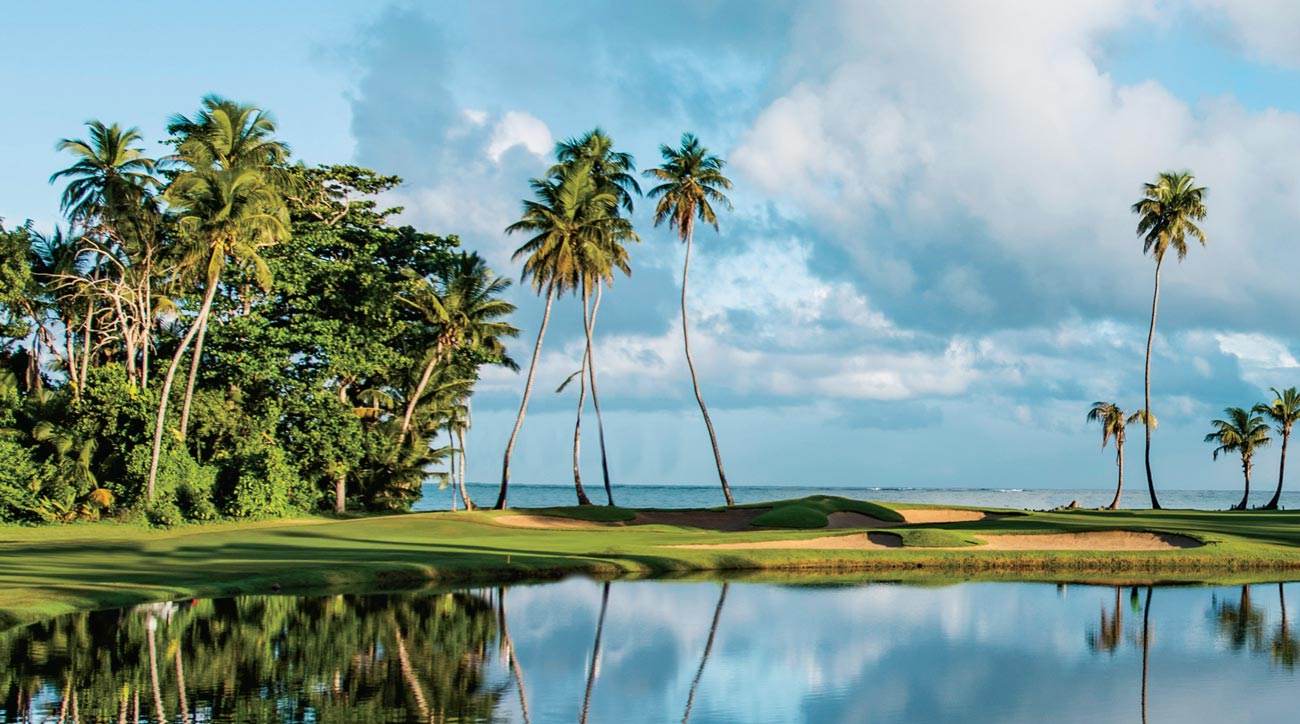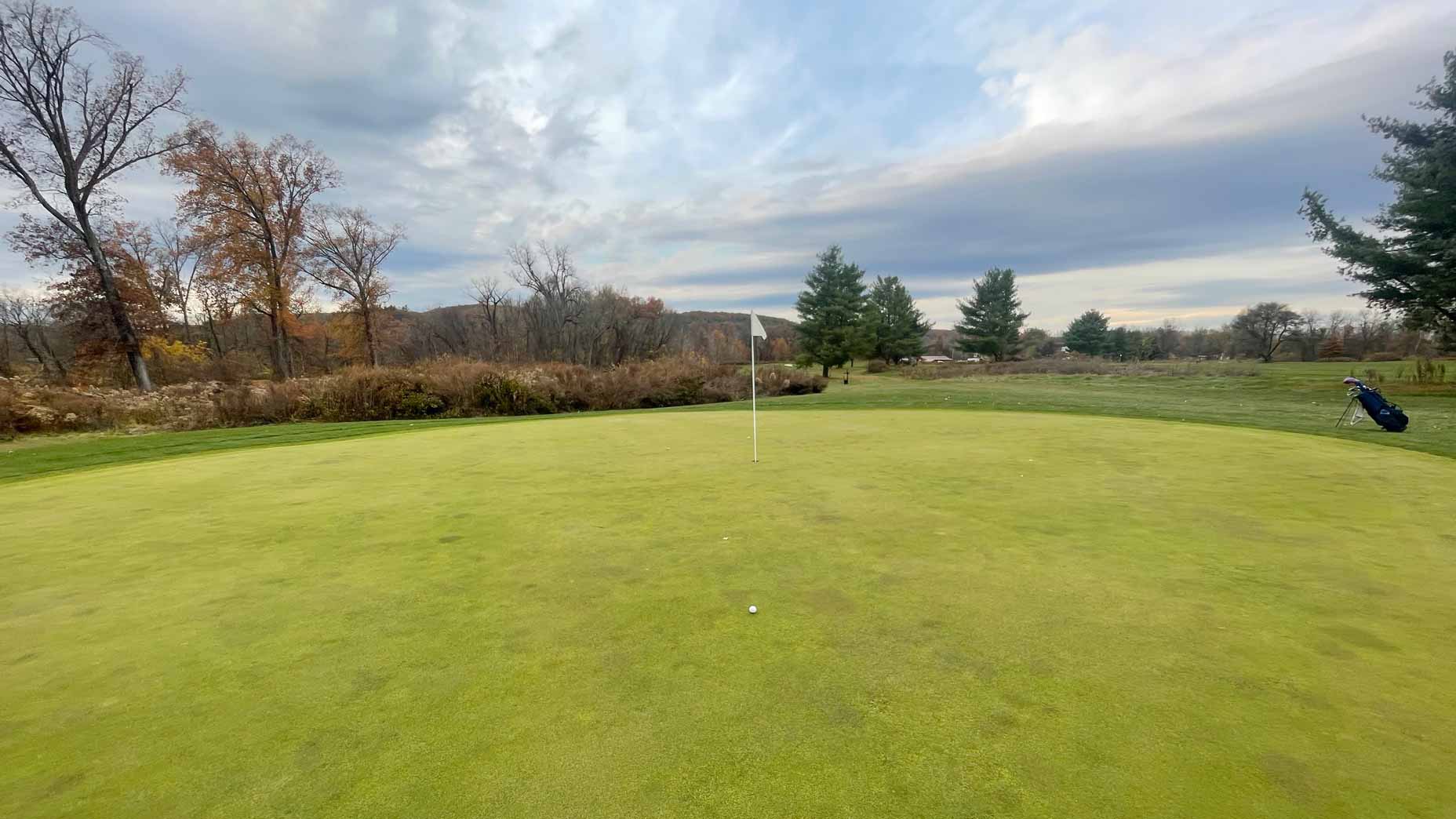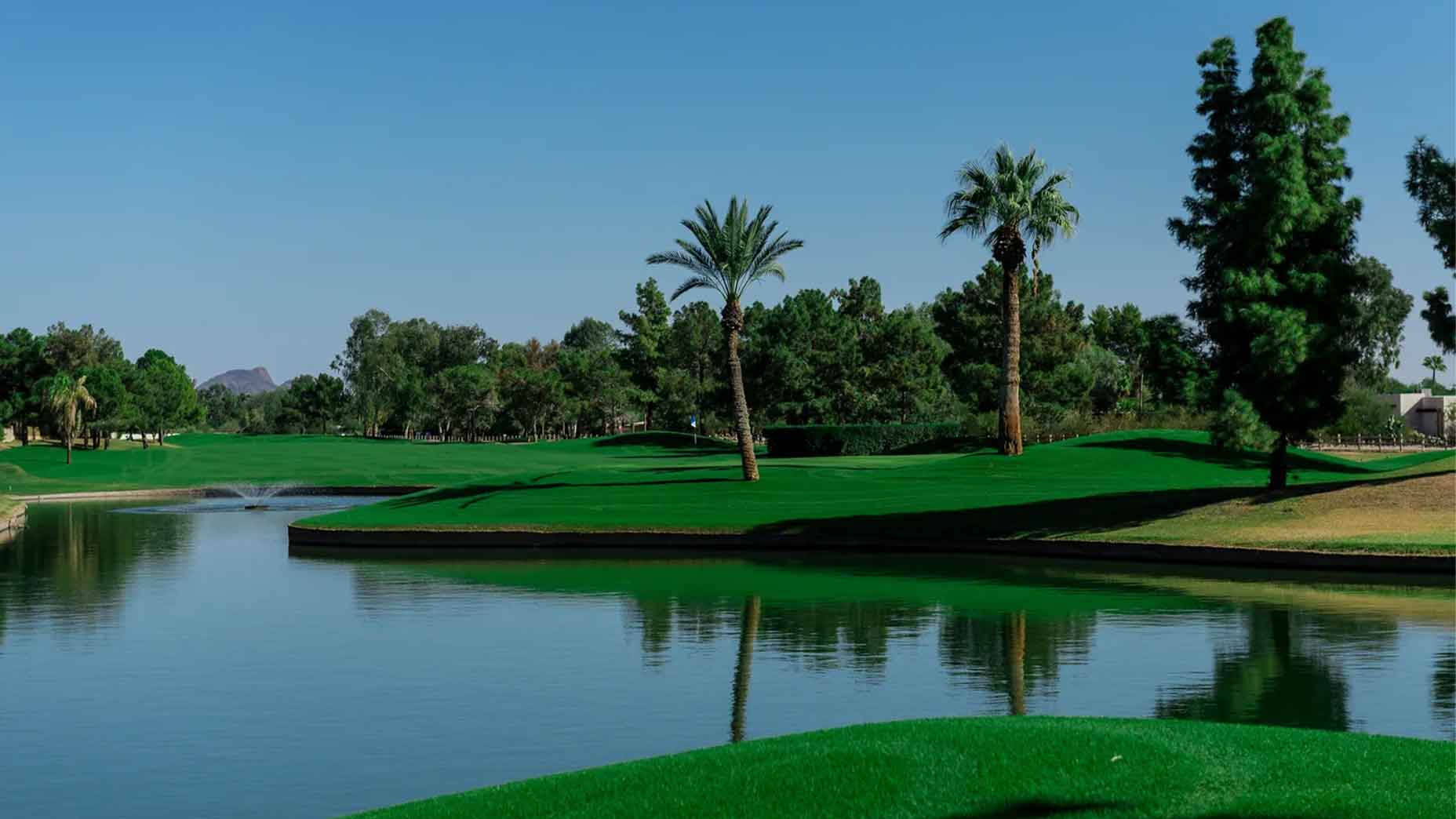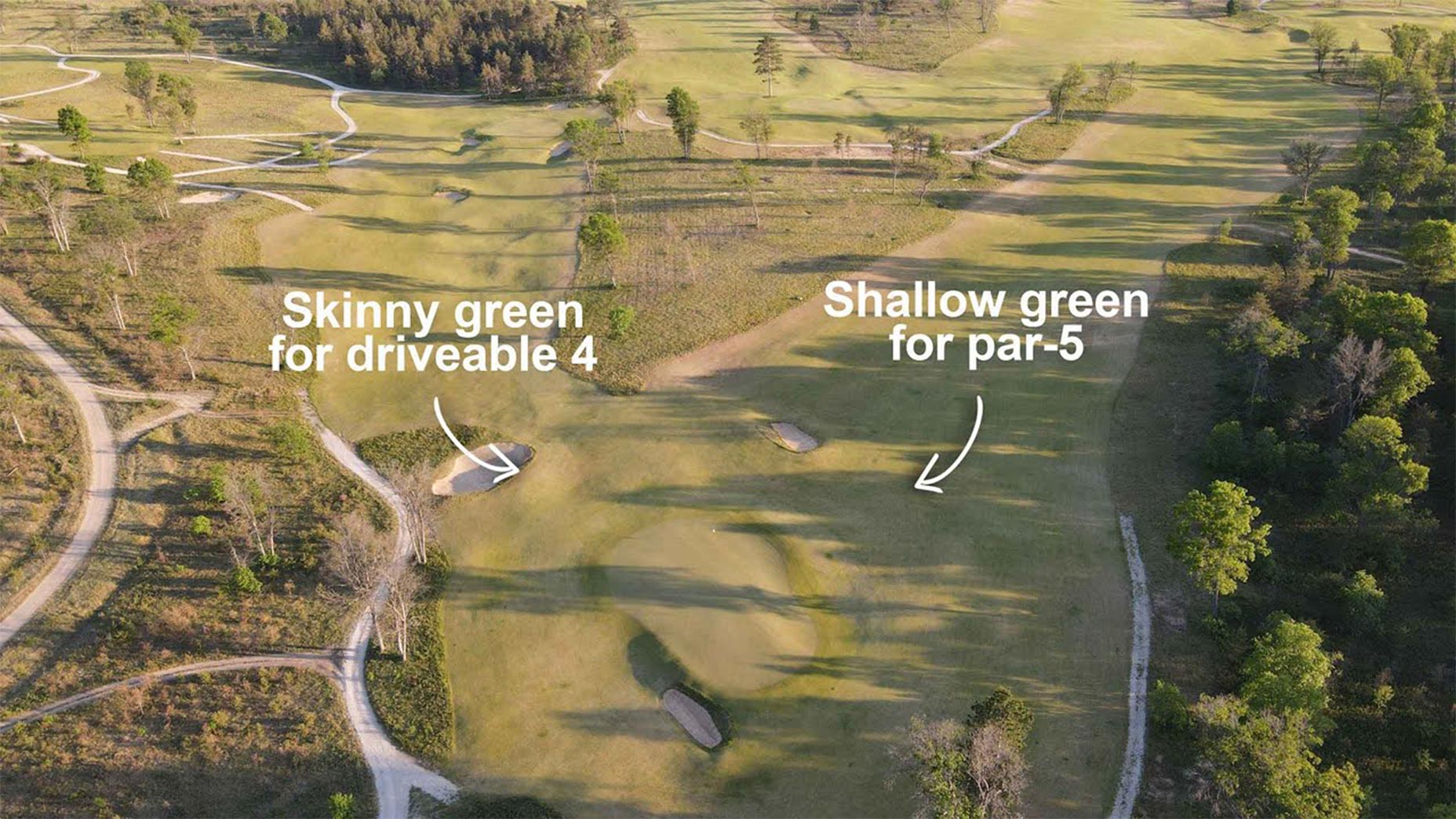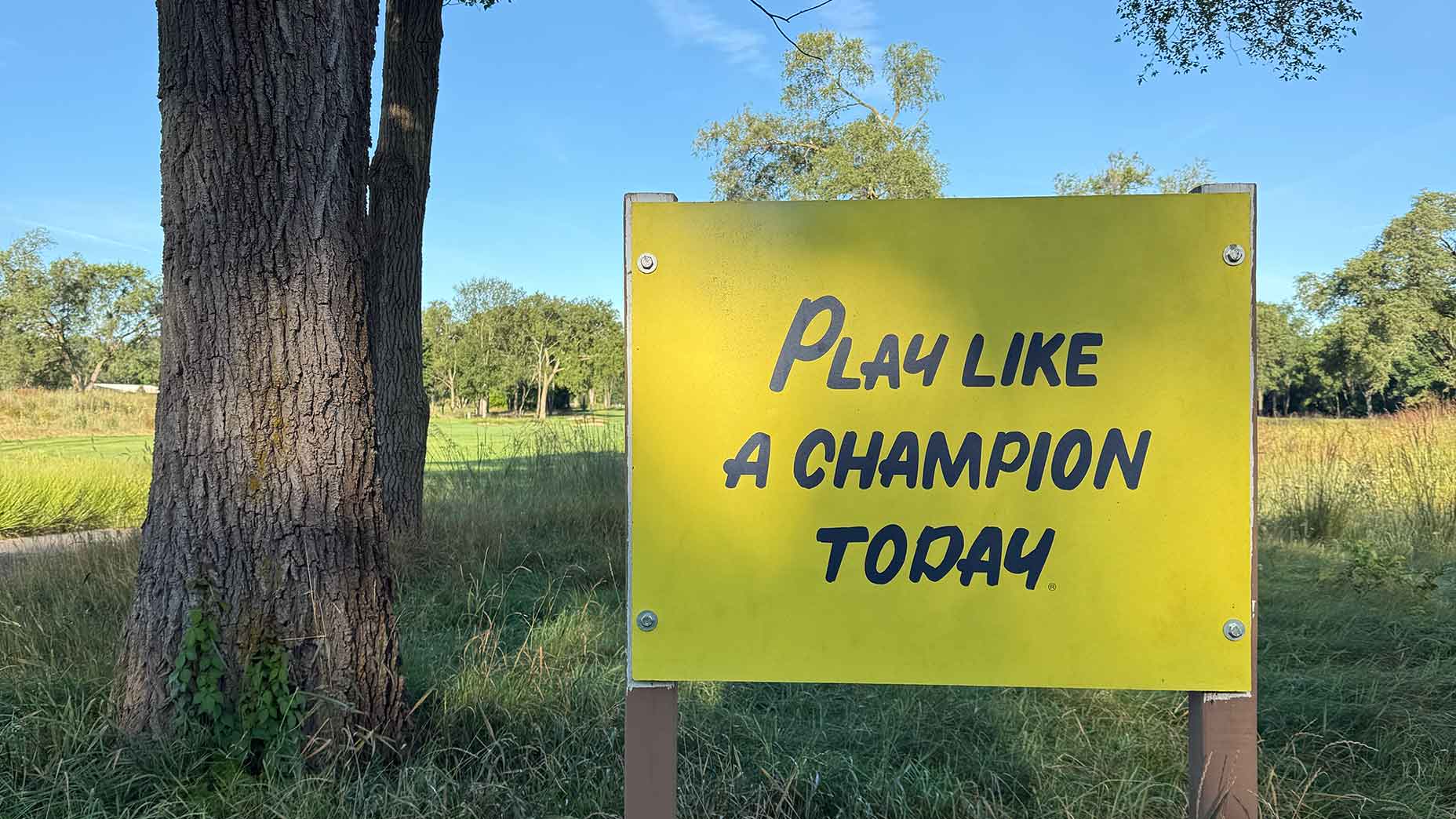My shoes have been stolen. Taken from my golf bag at one airport or another on my way here. Or maybe I left them behind in the bed of my truck in Indiana. They will be snowed under then. Still, I’m playing golf, in Puerto Rico. Wearing my Oxfords. First day. I’m at Punta Borinquen Golf Club, a wild and woolly public course built on a former American airbase (and once favored with play by Dwight Eisenhower), a 6,000-yard tester perched high above the ocean on the island’s isolated, windblown western shore. Yes, the grass could be greener here, but the views could not be clearer.
Punta Borinquen sits on cliffs at the confluence of the Atlantic and the Caribbean, one or the other, or both, visible from every hole. It seems an ancient track, like some forgotten gem in coastal Ireland. Nothing too tough but nothing to apologize for, either. This place makes you want to play. I drove out here the night before, and it’s now too early to shop for new shoes. So the dress shoes will have to do.
At the modest clubhouse, I’m thrown in with a regular threesome, three local captains — two guys in retail, one former firefighter from New Jersey. Three affable ballbreakers who seem happy enough to take a gringo along with them. They clip their cigars for future use, call each other names in Spanish. Tell me to buy water. The wind will dry you out. When the firefighter sees my shoe situation, I cringe a little for us both. “My shoes didn’t make it,” I tell him. “These will be fine.”
He seems shaken by the thought. “What?” he says. “You can wear these!” He points to his own shoes, the very ones he’s wearing. Then he acts like a cousin of mine, amazed that I wouldn’t rely on the bottomline help of family, although I’ve never met him before. I object. And he won’t hear of it. I give him a no-no. He waves me off.
“I have many of these,” he says. “I’ll get you a pair.” Then he is gone. And somehow he has left me a pair of shoes that fit me. He returns wearing an identical pair, equally worn. First thing in Puerto Rico, someone has given me the shoes off their feet. Generous people here. They treat you like family.
Toward the end of the front nine, at the far edge of the course, a horse wanders onto the fairway. My playing partners sigh collectively. Naturally I want a picture. As I frame the shot, the firefighter mutters to himself. Something in Spanish maybe. “Warzenal” is what I hear.
I’m thinking he’s talking about the horse. Sounded pretty regal. A warzenal must be a wild horse. “So, that’s a warzenal?” I asked.
“No,” he laughs. “Warts and all. You’re trying to capture the warts and all.” I look at the horse. Little guy. Poor little Warzenal. I explain myself. I’m not going to post it on Reddit or anything. It’s just, this is what I came for — odd intrusions, anachronistic detail, an unwanted horse, shoes given from the heart. You never know in Puerto Rico.
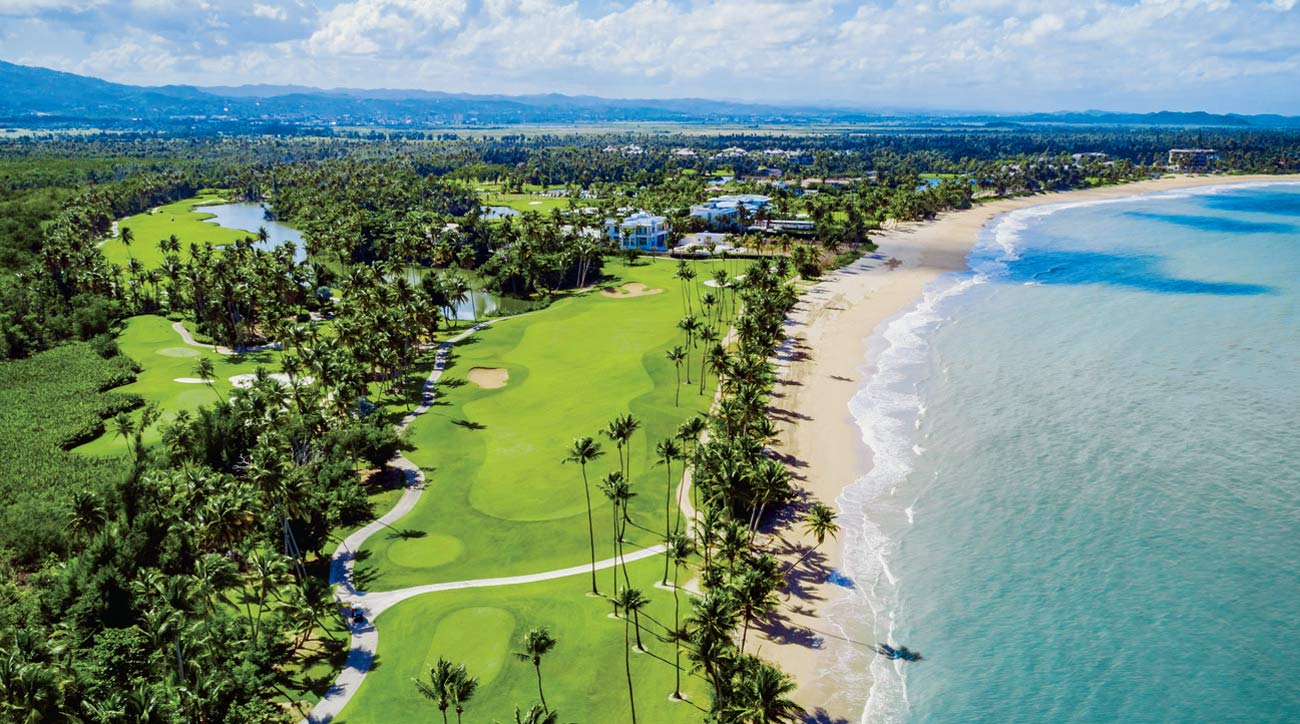
For a mainlander like me, arriving in Puerto Rico is still an exotic experience. There’s the sting of vacation in the air. The sky: a deep shade of clingy blue, clouds ever rising in columns. There’s a breath of the sea on the jetway, where fellow travelers un-sweater themselves in the warmth.
Foreign, distant, Caribbean. The streets are lined with carts selling fried whatnots. Fruit sits in baskets in front of gas stations. At meals, they serve plantains fried to the consistency of a poker chip. Things feel mildly unfamiliar, a little discomfiting. Why wouldn’t they? You’re in Puerto Rico. You have left your home behind.
And yet, arriving in Puerto Rico is marked by a stunning normalcy. Disembarking is easy. No customs for you. Your money spends here. Your cell phone works. Beautifully. Renting a car is easy. Driving is not. Still, people drive on your side of the road.
At night, in a sports bar, you find men and women, semi-circled in front of huge flatscreens, watching an NBA game while arguing Major League Baseball. And French fries are good everywhere you go. It’s not particularly American, but it’s America without any doubt. Welcome to Puerto Rico. You are home.
So why not Puerto Rico? I had shaped up the trip a week before. I needed golf, with some new faces, someplace warm. I’m not golf blind. I don’t like falling off a plane into the warm embrace of resort life. I like making my own way. I remain otherwise interested in the world.
I’d heard reports that Puerto Rico was mostly recovered from the epic damage wrought by Hurricane Maria nearly two years ago. I expected I’d still see some wreckage. You know, blue tarps, orange cones. But there are 17 courses on the 126-mile-wide island. Even if the roads were still out in places, I figured I could dodge my way from one to the next along one shore or another.
The western end makes a nice starting point for a Puerto Rico roadie, because you are free to choose between the earthy, stripped-down pleasures of Punta Borinquen or the rarified air of Royal Isabela, at 7,538 from the tips a gorgeous femme fatale centered around a sleek golf shop and soaringly modern hotel.
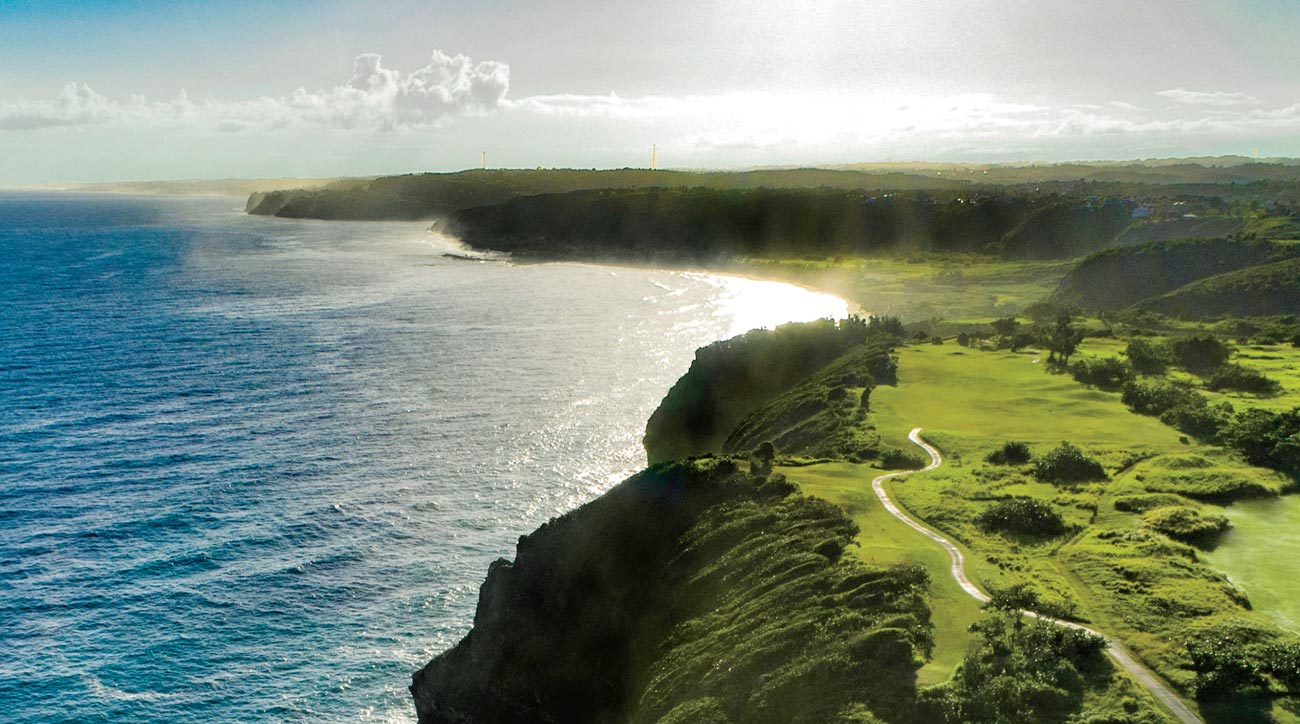
The playing experience is defined by at least 11 neck-breaking blind shots and fairways (like the 493-yard sixth, the “Yogi Berra” hole, which morphs from a par-4 one day to a par-5 the next, depending on wind or the superintendent’s mood. Different day, different card.
I went east from there, back toward San Juan, where I caught a memorable round at the TPC Dorado Beach — the East course. It’s a Robert Trent Jones design/Robert Trent Jones Jr. redesign that I played alongside Director of Golf Jeff Willenberg, who, as we moved from one fantastic hole to the next, openly discussed the impact of Maria on the course.
“We really became a community during those months,” he said. “We got our golf up and running quickly, then for weeks we fed hundreds of our employees and their families daily. We had the only satellite phone on this side of the island, and 24 hours a day there was a line to use it for just a few minutes at a time. People would just show up to use it.”
It’s true that the East course, like everything in Puerto Rico, still looks a little stressed, mostly in the spare tree lines and the still leafless upper branches in the arbors. But it remains a remarkable round of golf. “I sometimes miss the old course,” Willenberg said. “But a new course has emerged, and it’s pretty great, too.”
Through San Juan to the St. Regis Bahia Beach Resort, 25 minutes east of the capital city. This is a 6,890-yard affair, a Robert Trent Jones Jr. track that relies on a dense layout of small lakes (15 of the 18 holes border on water) and the persistent, ever-changing wind — from the ocean on one side and the rainforest on the other — to create a challenge that more than makes up for any perceived lack of distance.
Here I played with a Puerto Rican merchant who was riding out the last days of an infection in the tip of a finger. He gripped the wheel of our cart, the injured finger held stiffly in front of him. “I can’t grip my long irons,” he told me, “but I also can’t punch a cash register in my shop all day. So the question is: Where am I doing the most good?” He smiled as we approached the first tee. “Sometimes we must play,” he declared, nodding toward the crisp outlines of the once-damaged hole ahead.
Further east and south, past a virtual graveyard of gargantuan wind turbines, blades bent or broken off by the force of Maria’s gusts, I find myself on my last day, at the Palmas Athletic Club at Palmas Del Mar, in Humacao. Once again, I’m thrown in with a regular threesome. I’m in one cart with an advertising executive named José, who plays a huge draw mostly to his advantage. And in the other cart is his weekly huckleberry, Carlos. The third guy is a quiet friend from out of town, with a loud orange shirt. They care only about birdies and routinely disregard pars. And speed. They make me feel like their brother. And maybe I am.
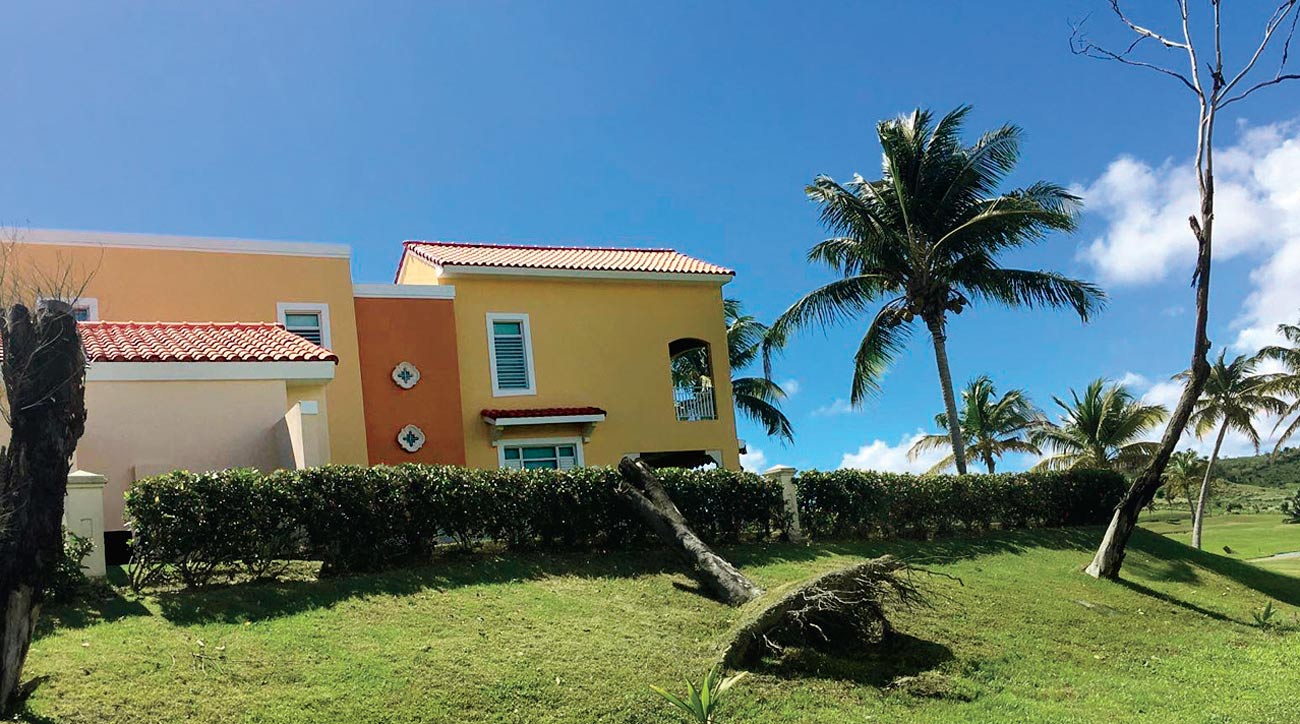
Palmas features two 18-hole layouts: The Palm, an early Gary Player course, opened in the ’70s, and The Flamboyen (named for a local tree), a masterful 7,118-yard Rees Jones design. We play the Palm, where remnants of Maria are still visible in many spots — the uprooted stumps of trees and blown-away roof tiles on the nearby residences. Maria made land here first. “The storm lasted 12 hours,” José tells me. “I have lived through many hurricanes. Usually it’s three or four hours, then stop. But this. This. Maria seemed that she was never going away.”
Yet when he looks at his course, midday on a Saturday two years later, it is wide open and ready for golf. There are no hitches, no delays. These courses, like the island itself, are ready to play host again.
Eventually, I spy a five-foot-long iguana lakeside, and my foursome offers me no encouragement to take a picture. There are iguanas everywhere on this end of the island. And black ducks. “We hate the iguanas in Puerto Rico,” José tells me. “But we bear with them.”
“They are a good reason for wild dogs,” says Carlos.
“They ruin the course,” José says. “But they were here long before us.”
“They are a good reason for the spikes on your shoes,” says Carlos, urging me on.
I look down at those shoes. By now, they are my favorite shoes. Ever. “I would never spike a lizard,” I declare. And it’s true. Besides, these shoes, and what came with them! They were a gift of the island.

